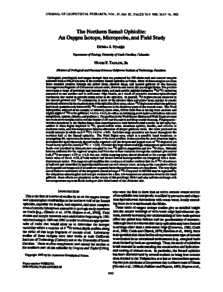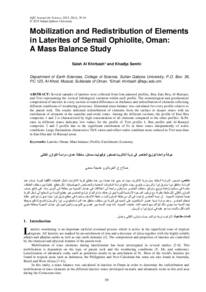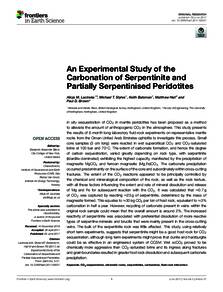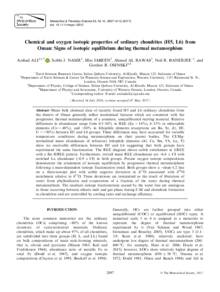Document
The northern Samail ophiolite : an oxygen isotope, microprobe, and field study.
Identifier
DOI: 10.1029/91JB02743
Source
Journal of Geophysical Research. v. 97, B5, p. 7043-7080
Contributors
Hugh, P., Author
Taylor, J. R., Author
Country
United States.
City
Washington
Publisher
the American Geophysical Union.
Gregorian
1992-05-10
Language
English
English abstract
Data are presented for 228 whole rock and mineral samples collected from a 100×20 km area. Most of these samples are from three detailed profiles through the pillow lavas, sheeted dikes, and layered gabbros of this laterally heterogeneous fragment of Cretaceous oceanic crust, down to and across the petrologic Moho. In general, 18O depletions are observed in the layered gabbros and 18O enrichments in most of the sheeted dikes and pillow lavas, similar to results previously observed in the southern part of the ophiolite (Ibra area), where 18O depletions within the gabbroic section are quantitatively balanced by 18O enrichments in the shallower parts of the oceanic crust. Results support the conclusion of earlier workers that the δ18O of seawater is buffered and controlled by hydrothermal interaction with oceanic crust, as long as the cumulative effects (both spatial and temporal) of all seafloor magmatic/hydrothermal processes are considered. The very slight out-of-balance enrichment of the integrated crustal average δ18O compared to MORB may be explained by the ubiquitous mineralogical and isotopic evidence for a late, low-temperature alteration event in the basal gabbros; these effects are prominent in the vicinity of the petrologic Moho and may indicate exchange with low-temperature aqueous fluids during or after detachment of the obducted slab. -from Authors
ISSN
0148-0227
Resource URL
Category
Journal articles




